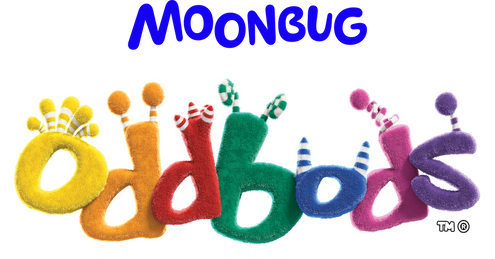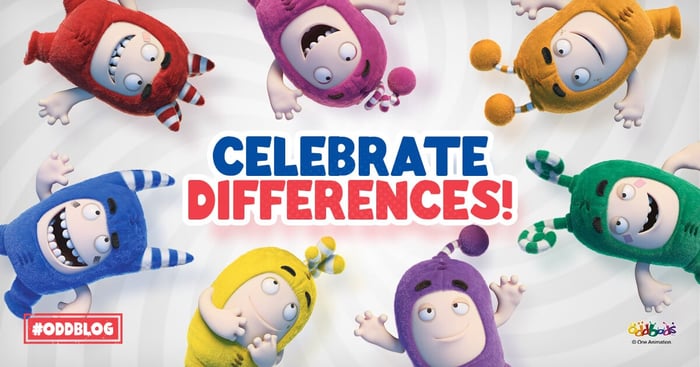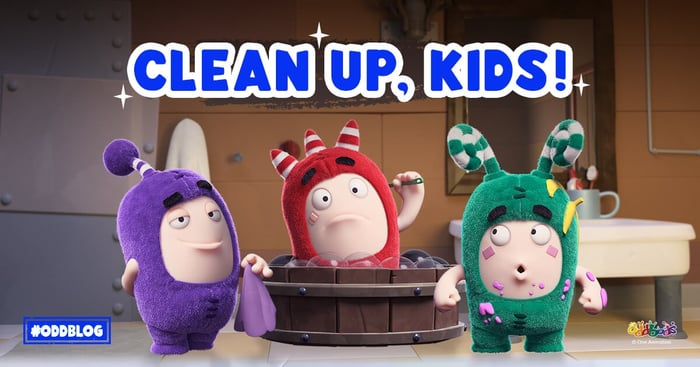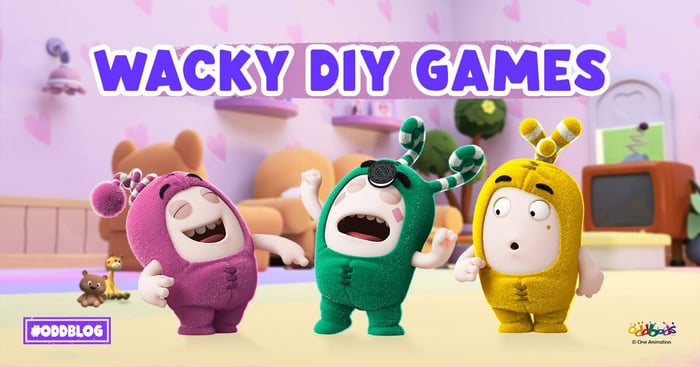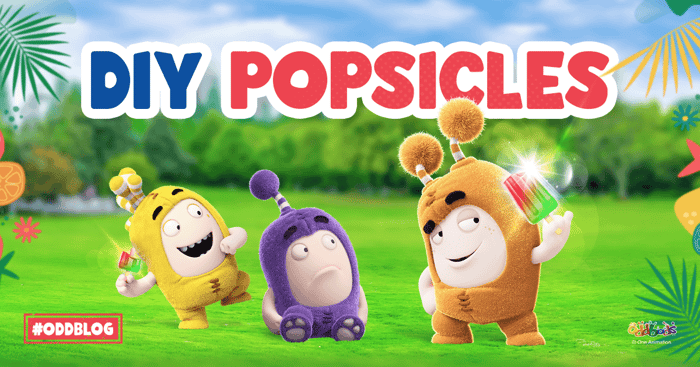As children navigate their social world, they begin to develop an awareness of differences between how they look and how others look. Studies show it’s typical for two-year-olds to begin noticing differences in genders and races, and for three-year-olds to begin noticing physical disabilities.
All of these are normal and developmentally appropriate. But for some parents, they feel uncomfortable when their children make loud observations about other people in public. Or they feel at a loss when they discover that their children have received unkind comments about how they look or are predisposed to behave, especially from their peers.
As parents, we can start teaching our children about diversity even from young. And Oddbods can help! We celebrate individuality through the madcap adventures of the seven Oddbods characters who each have unique personality traits and characteristics.
Here are some tips to help your child see that differences make the world fantastical, and that their uniqueness can be a personal strength!
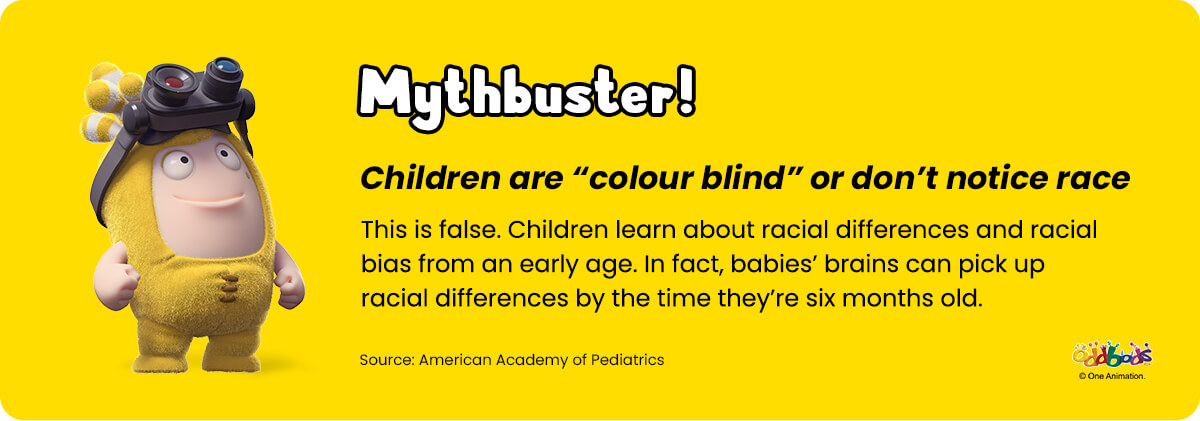
Be a Positive Role Model and Show Culturally-Responsive Behaviour
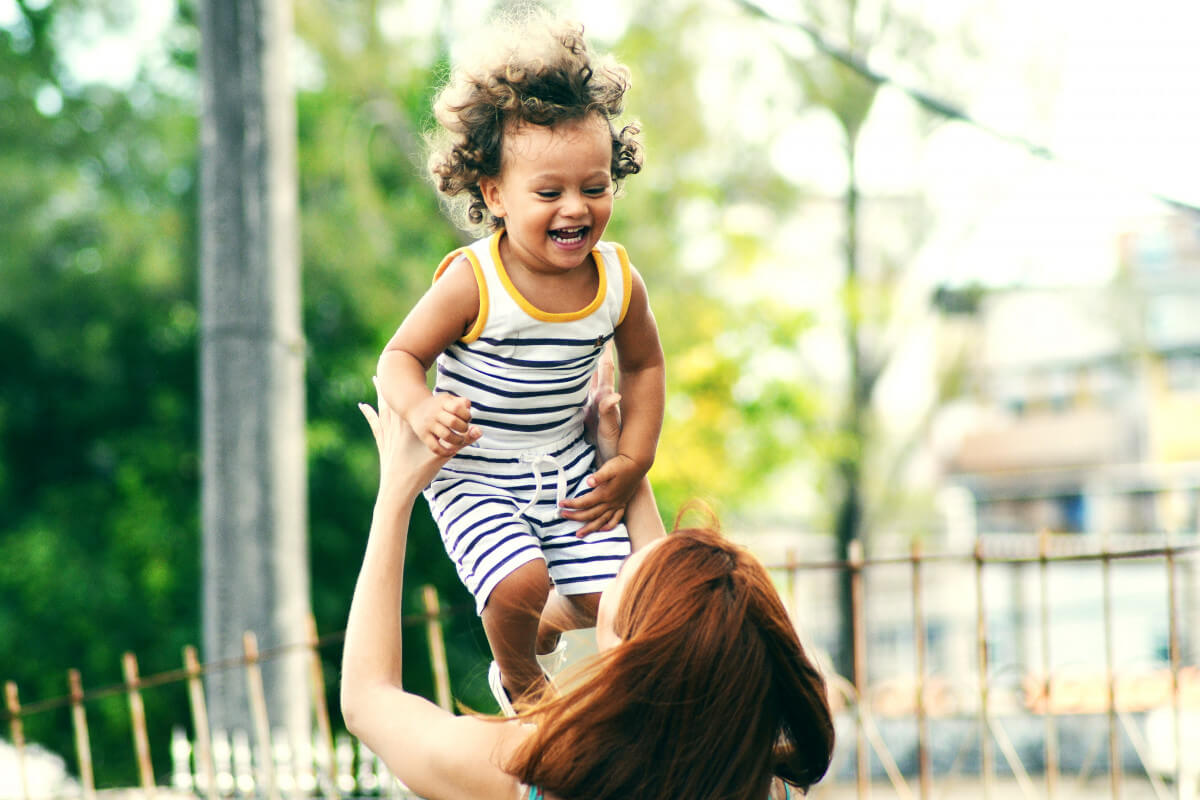 Model inclusive behaviour, and your child will slowly follow suit. Photo by Thiago Cerqueira.
Model inclusive behaviour, and your child will slowly follow suit. Photo by Thiago Cerqueira.
If you’ve heard your child unexpectedly repeat phrases that you’ve used, you’ll know first-hand that they model our behaviour more than we’re aware. So, the most effective way to teach little ones to approach diversity respectfully is to model the behaviour ourselves.
This might mean us making friends with people of different races and religions, calling out racist jokes instead of laughing along with them, and using respectful language around disabilities, indigenous people, and gender identity.
And when you catch your child using a derogatory term that they may have picked up from their friends or the media, firmly correct your child and explain that the term is hurtful. As diversity and inclusion strategist Alden E. Habacon suggests, you might say, “How would you feel if you had an intellectual disability and someone called you a retard?”
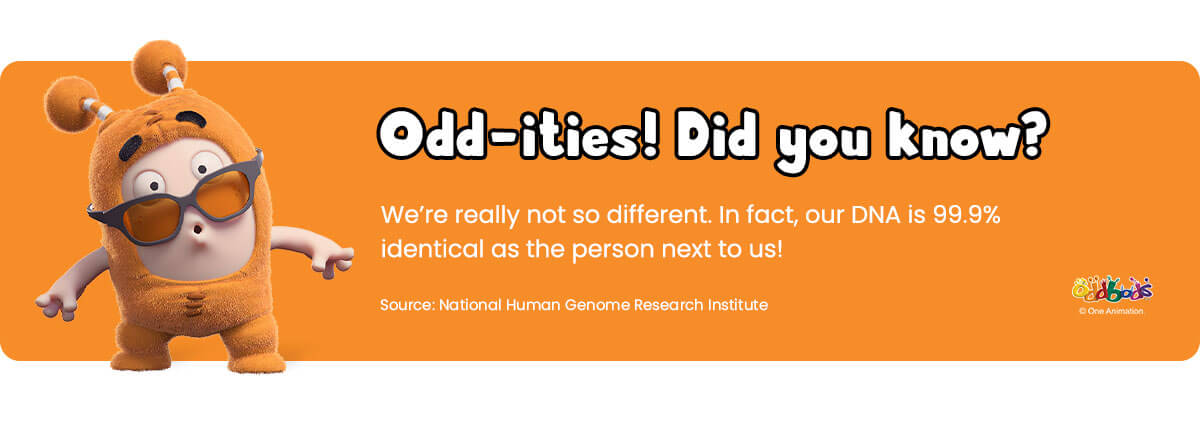
Have Open Conversations About Stereotypes and Biases
Talking about race, gender identity, and disabilities can make us cringe because they’re sensitive topics and many of us fear of sounding like a bigot. However, having open conversations about these issues will help to condition our children’s minds to reject biased and stereotypical viewpoints.
Before leading such conversations, you can read up on diversity and inclusion, learn the language, and build your confidence around these topics. By discussing the differences among people that our children can observe, they’ll gradually develop maturity around these issues and learn how to ask questions appropriately.
One exercise is to hold up a green apple and a red apple and explain that even though they’re different colours, they’re both apples. Or you can point out that even though Newt is pink, Bubbles is yellow, and Zee is green, they’re all Oddbods! Our skin colour doesn’t matter – it’s who we are inside that does.
Expose Children to Diversity and to Learning Materials that are Inclusive
Books on diversity are excellent resources for teaching children about how we’re all different and why it’s perfectly okay. You can also share with them stories or articles about issues that others face because of their race or ethnicity, and take the opportunity to teach them about empathy.
Another way to introduce diversity is to explore the different cultures within your community and study more about their cultural practices, celebrations, and food with your child. This will help your child discover and appreciate the rich cultural differences found where you live. For older children, you can also emphasise the respect and tolerance that we should have for people different from us.
And let’s not forget shows such as Oddbods, where we celebrate every character’s individuality to show that being different can be a positive!
Play to Your Child’s Strengths
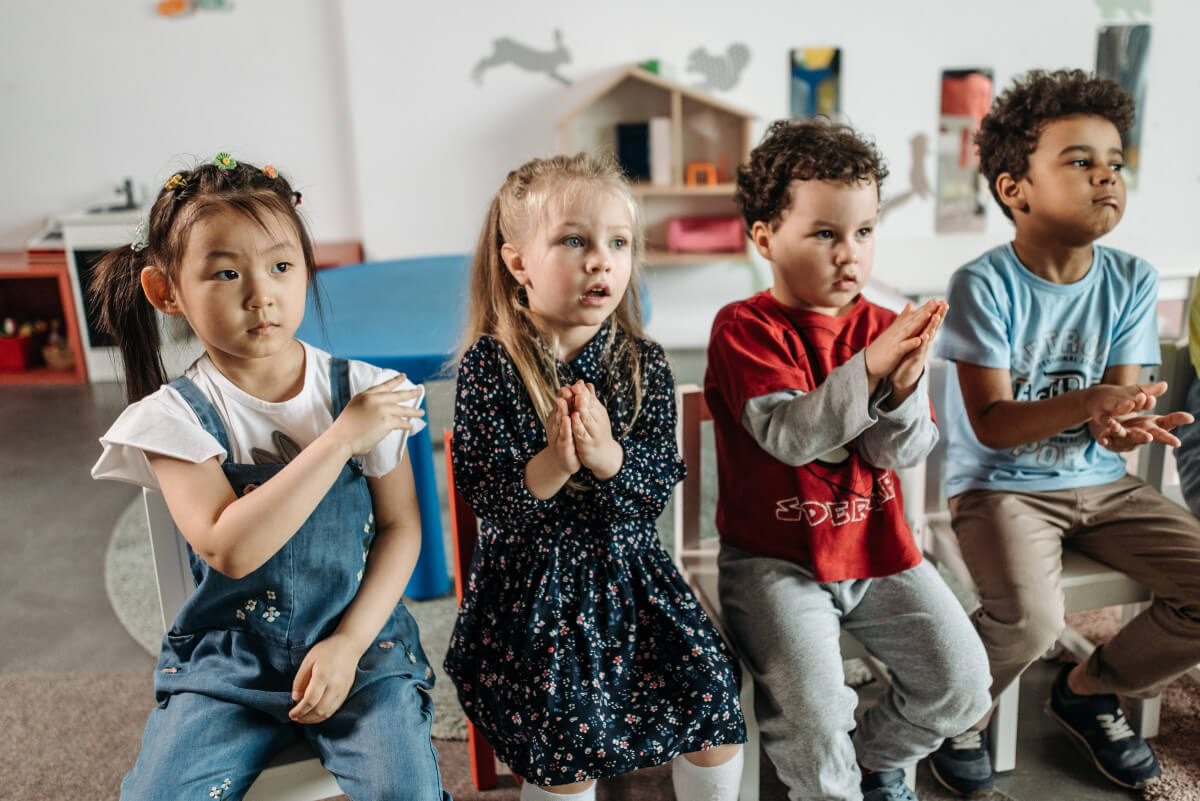 Each child has their own strengths and weaknesses. Instead of focusing on the latter, focus on strengths so that their self-confidence can grow. Photo by Pavel Danilyuk.
Each child has their own strengths and weaknesses. Instead of focusing on the latter, focus on strengths so that their self-confidence can grow. Photo by Pavel Danilyuk.
Especially for children who may be struggling with being different, you can help to build up their self-esteem by playing to their strengths. This means focusing on what they do well, which can affirm their sense of individuality and raise their self-confidence.
Encourage your little ones to express themselves in the way that works best for them. For instance, if they especially enjoy dancing, quietly looking at picture books, or building massive dinosaurs from plastic bricks, support their activity with plenty of praise and positivity.
And it really doesn’t matter if they have a passion for something different from their friends – if it makes them happy, that’s the most important thing of all. There’s no need to be like everybody else!
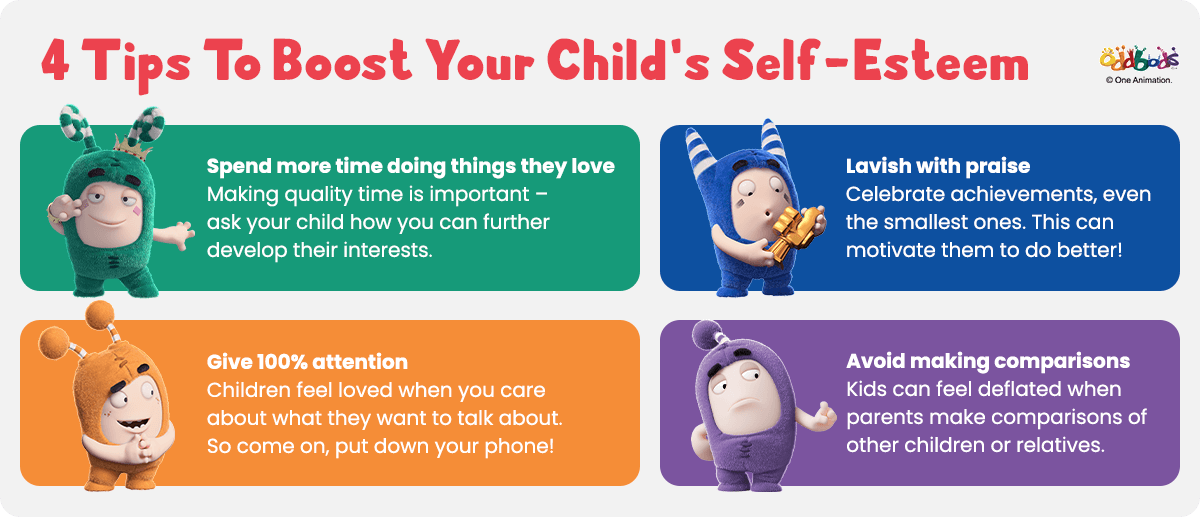
Focus on the Skills and Characteristics We Can Build
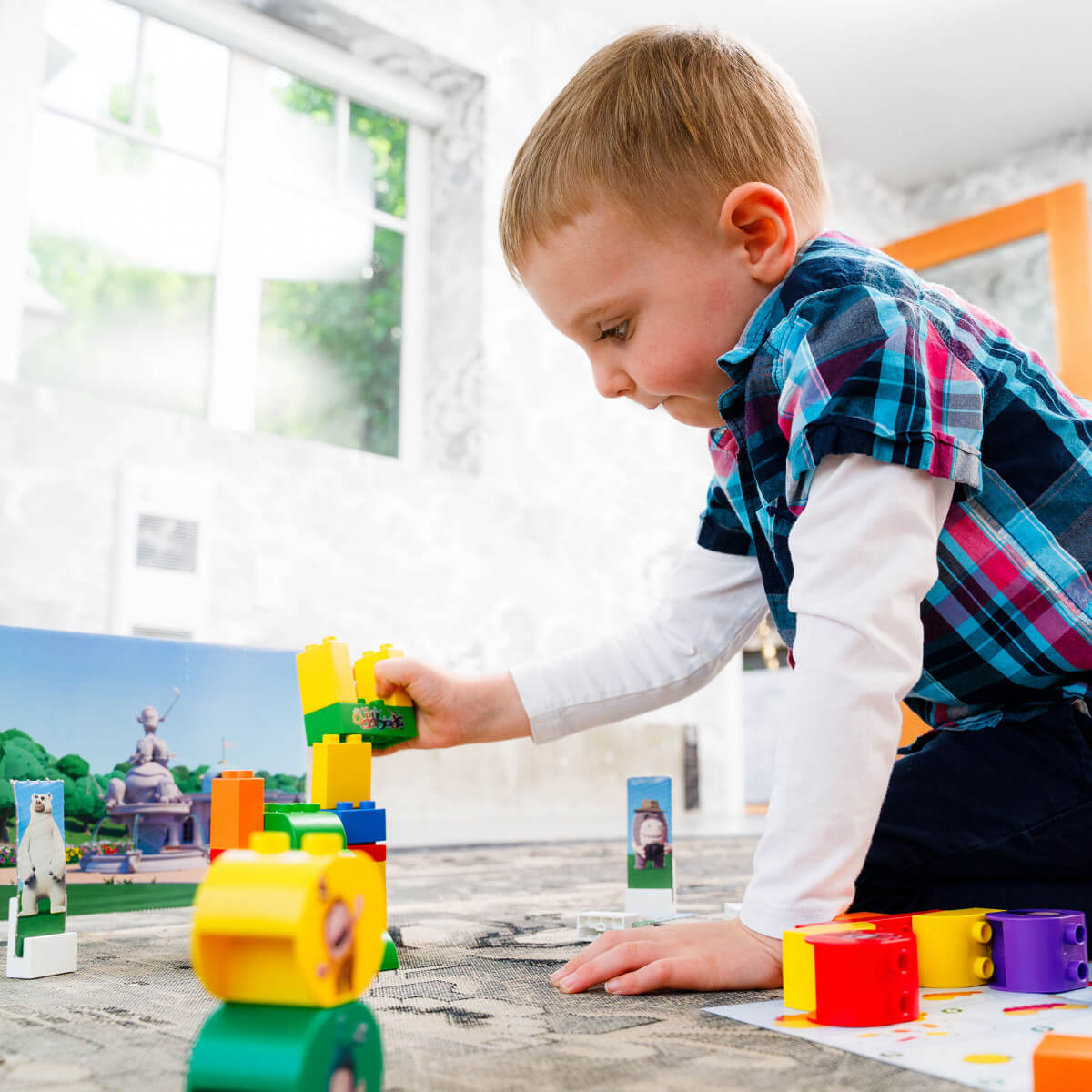 Keep nurturing your child’s skills and building their characters. These are things we can help to develop. You can purchase the Oddbods’ Plant-Based, 41 Piece Set Eco Blocks on Amazon!
Keep nurturing your child’s skills and building their characters. These are things we can help to develop. You can purchase the Oddbods’ Plant-Based, 41 Piece Set Eco Blocks on Amazon!
Another strategy to guide our kids to handle differences well is to shift their focus towards self-improvement and help them work on their self-acceptance. We cannot change our physical appearance, but we can work on being the best versions of ourselves. You could talk to them about building on their strengths and setting simple goals.
For instance, if your child likes building and making things just like Fuse does, you could challenge him or her to build a taller and steadier ball run using wooden blocks and magnet tiles.
In the process, they would be developing skills such as understanding basic math concepts, perseverance, problem solving and creativity – all great skills and characteristics to have.
The Perfect Mix
Teaching our children to accept being different and seeing it as a personal strength is a life-long endeavour. Remember, there’s a little odd in everyone!
Which of our Oddbods does your child relate to most? We’d love you to tell us in the comments below!
